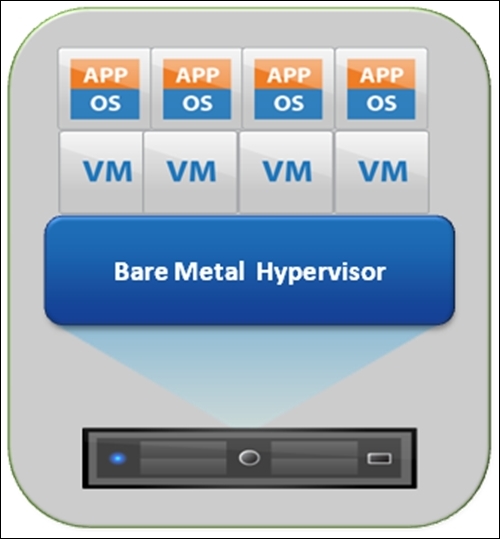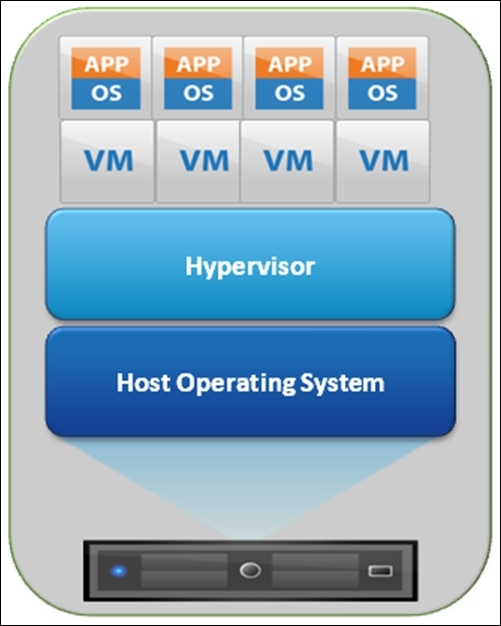This chapter will introduce you to the basics of virtualization. It discusses VirtualBox features, the high-level architecture of VirtualBox, and why you would want to use virtualization.
The adoption of virtualization technology has increased considerably in the past few years. However, it's not a new concept and has been around for some time now. This section provides the details of virtualization technology and concepts around it. This chapter also highlights why it's the talk of the town and why organizations are embracing virtualization.
This technology provides a way to separate physical hardware (computer) and software (OS and applications) by emulating hardware using software. Also, it enables a computing environment to run multiple independent systems at the same time.
Today, data centers use virtualization to make an abstraction of physical hardware. Virtualization technology helps to create large pools of logical resources consisting of CPUs, memory, disks, storage, and so on, and offers those resources to users or customers in the form of scalable and consolidated virtual machines.
A hypervisor is also known as a virtual machine monitor (VMM). It is a piece of software that enables a user to simultaneously run one or more operating systems, which are known as virtual machines (VM).
Each VM is called a guest system or guest OS, and the physical server on which such a guest OS runs is known as a host system or host OS.
Hypervisors are divided into Type 1 and Type 2.
- Type 1: This is also known as a bare metal or native hypervisor. This type of hypervisor runs directly on hardware. Examples of bare metal hypervisors are the Oracle VM server, Microsoft Hyper-V, VMware ESX/ESXi, and RHEV.
As shown in the following screenshot, a Type 1 hypervisor runs on the host's system without a host OS:

- Type 2: This is also known as a hosted hypervisor. This type of hypervisor runs on a host OS. In other words, a host OS is installed on top of the host system and the hypervisor runs on top of it. Examples of the hosted hypervisor are VirtualBox, Microsoft Virtual PC, VMware Server and Workstation, and parallels.
As shown in the following screenshot, the Type 2 hypervisor needs a host OS installed on the host system and a hypervisor runs on top of it:

